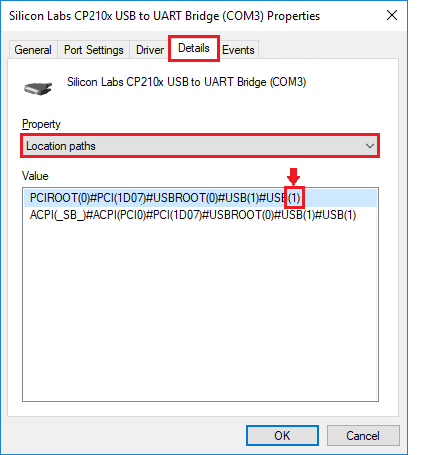TS-990S, TS-890S, TS-590SG, TS-590S, TH-D72A/E
KPG-22U, KPG-46U, KPG-186U
Virtual COM Port Driver | Last updated : August 21, 2019 |
| | Introduction | | Thank you for choosing the KENWOOD transceivers. You can connect your TS-990S, TS-890S, TS-590SG, TS-590S, or TH-D72A/E to a PC via a USB cable, or you can connect your TH-K20A/E, TH-K40A/E, TM-281A/E, TM-481A, or other transceivers to a PC via the KPG-22U/46U/186U programming cables by installing the virtual COM port driver in the PC, and then utilize the Radio Control Program, Memory Control Program, or other software we have provided. | | This virtual COM port driver installation program is provided by Silicon Laboratories Inc. | | After reading through the following explanations, feel free to download and install the software. |
| | Operating Environment | | 1. | Operating System (OS)
Windows® 7 (32-bit or 64-bit)
Windows® 8.1 (32-bit or 64-bit)
Windows® 10 (32-bit or 64-bit) | | 2. | Peripheral Devices
USB 2.0 interface. |
| | Installing the virtual COM port driver | | ATTENTION: Do not connect the device to a PC before installing the virtual COM port driver. | Extract the downloaded file ('CP210x_Windows_Drivers.zip' for Windows® 7/8.1, or 'CP210x_Universal_Windows_Driver.zip' for Windows® 10) into a designated folder.In the designated folder, a folder labeled 'CP210x_Windows_Drivers' or 'CP210x_Universal_Windows_Driver' will be created.
In the created folder, double click the 'Cp210xVCPInstaller_x86.exe' with 32-bit OS, or the 'Cp210xVCPInstaller_x64.exe' with 64-bit OS, and follow the instructions that appear on the display to install the virtual COM port driver.
|
| | Connecting the device to a PC | Turn the transceiver power ON, then connect it to a PC via a connection cable for the transceiver. The PC will detect new hardware.
The installation of the device driver software will start automatically.
If a reboot request appears, please reboot the PC. |
| | Confirming the COM port number | Open the 'Device Manager' to confirm which COM port number is assigned for connection with the device.
(Confirm the COM port number after turning on the transceiver and connecting the transceiver to the PC using a USB cable, or after connecting the KPG-22U/46U/186U to the PC.)
For Windows® 7
1. Click the Windows® [Start] button.
2. Right-click [Computer], then click [Properties].
3. Click [Device Manager] in the displayed window.
4. [Device Manager] window will appear.
For Windows® 8.1 and Windows® 10
1. Right-click the Windows® [Start] button.
2. Click [Device Manager] in the displayed window.
3. [Device Manager] window will appear.
Click “Ports (COM & LPT)” to extend it, then you can find “Silicon Labs CP210x USB to UART Bridge (COMxx)”.The “COMxx” number is different depending on your PC.
In the above example, “Silicon Labs CP210x USB to UART Bridge (COM3)” is listed. This means that COM3 is assigned for the connection with the transceiver.
Select this port number in the configurations for communication in the software you are using. |
| Note:
When connecting a TS-890S transceiver to the PC, 2 virtual COM ports are assigned as follows.
In the TS-890S Menu settings, these 2 virtual COM ports are defined as [Virtual 'Standard' COM Port] and [Virtual 'Enhanced' COM Port].
These 'Standard' and 'Enhanced' virtual COM ports are distinguished as follows.
•Double-click on these in the Device Manager to display the respective Properties windows.
•Select the 'Details' tab and then select 'Location Paths' (or 'Rutas de acceso de ubicación':Español, 'Chemins d'accès des emplacements':Français, 'Speicherortpfade':Deutsch, 'Percorsi':Italiano, 'Locatiepaden':Nederlands) from the Property drop-down menu.
•Move the mouse cursor to the line displayed in the 'Value' column (the top line if multiple lines are displayed) and check the number in the parenthesis on the right end of the character string.
The port displayed with the number (1) is the virtual COM (Standard) port of the transceiver.
In the display example above, the virtual 'Standard' COM port is assigned to COM3.
The port displayed with the number (2) is the virtual COM (Enhanced) port of the transceiver.
In the display example above, the virtual 'Enhanced' COM port is assigned to COM4.
Please also refer to the TS-890S Instruction manual for details.
| | If you agree with the details listed above, click one of the following links corresponding to each OS to download the virtual COM port driver installation program. | For Windows® 7/8.1:
'CP210x_Windows_Drivers.zip'(v6.7.6) 6.83MB download
For Windows® 10:
'CP210x_Universal_Windows_Driver.zip'(v10.1.8) 878KB download
| | You can also download the latest and earlier versions virtual COM port driver installation program from the Silicon Laboratories website. (The URL link is subject to change.). | | Microsoft®, Windows®, and Windows logo are registered trademarks of Microsoft Corporation in the United States and/or other countries. |
|
